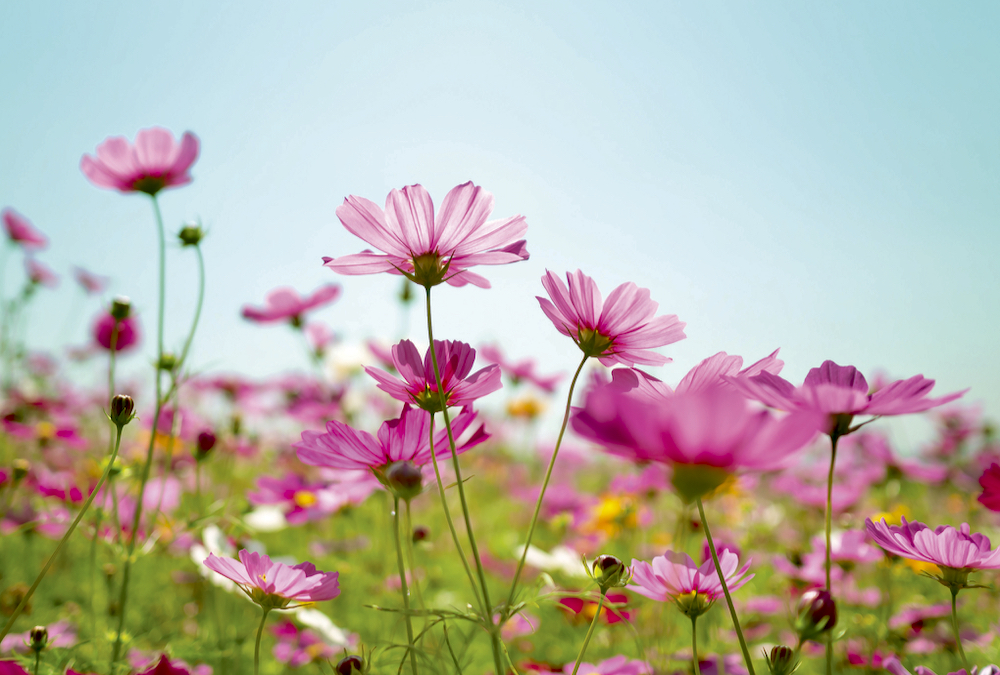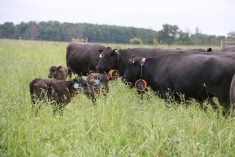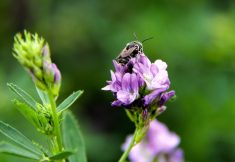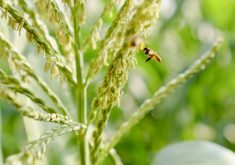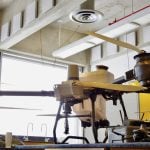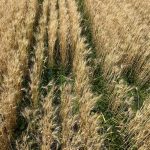When even a $400 book about flower seed production failed to yield useful information about isolation distance for popular cut flower varieties, Kim Delaney knew she needed to dig deeper.
Now, after three years of an on-farm research project through the Ecological Farmers Association of Ontario (EFAO), she’s starting to find answers.
“With veggie seed production, (isolation distance guidelines) are out there. It’s easy to get your hands on them,” said the owner of Hawthorn Farm Organic Seeds near Palmerston, during the recent EFAO annual conference.
Read Also
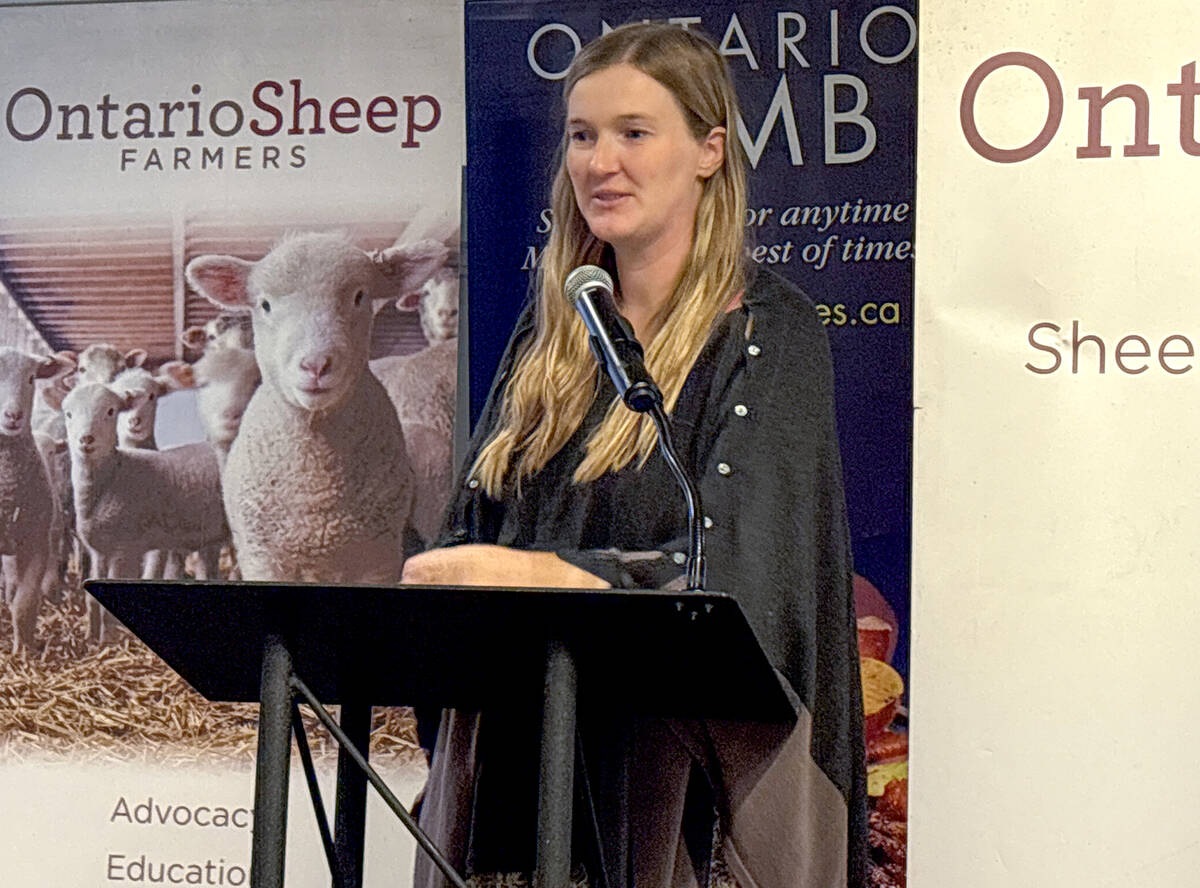
Footflats Farm recognized with Ontario Sheep Farmers’ DLF Pasture Award
Gayla Bonham-Carter and Scott Bade, of Footflats Farm, win the Ontario Sheep Farmers’ 2025 DLF Ontario Pasture Award for their pasture management and strategies to maximize production per acre.
Delaney was one of several presenters during the On-Farm Research Symposium Nov. 29.
Why it matters: Interest in home gardening of food and flowers has skyrocketed during the pandemic and many new gardeners are looking for locally or regionally produced seed.
Hawthorn Farm has been producing certified organic herb, vegetable and flower seeds since 1996 but Delaney says the flower side of the business has always been a guessing game when it comes to isolation distance. The mainstream flower seed sector treats the information as proprietary, something she doesn’t experience when it comes to most of the herb or vegetable varieties her farm produces.
They’ve always used 800 feet in flower seed production but, with only about three acres of the 100-acre property under cultivation, that typically translates into growing two or three plots of a single flower to avoid cross-pollination.
Isolation distances prevent natural pollinators from creating crosses with seeds that won’t produce plants identical to the parent flowers. Delaney says consumers understand if they find one or two per cent of the flower seeds in a packet aren’t true to type. But if it’s more, the seed producer’s reputation will decline.
An additional challenge is that most flowers have been bred to attract pollinators. With dozens of beehives on-site and an array of flowering plants, Hawthorn Farm is typically abuzz with bees, butterflies and birds.
In 2019, through the EFAO’s on-farm research program, they began a journey to determine flower seed isolation standards.
Using a white variety and a pink variety of cosmos, a species attractive to pollinators, they established plots isolated from each other at 400 feet and 600 feet. Between the isolation plots, they planted bush beans and other plants unattractive to pollinators.
In 2020 there were problems with planting, mainly from rabbits and frost, so they redid it in 2021 with some original seeds from the 2019 planting.
At 400 feet of isolation, they found four off-types in one variety and three in the other.
“One was very pretty, though,” says Delaney, with striping pink and white. They saved seed and hope to replicate that colouration.
However, she concluded that at 400 feet “it’s too much crossing to be selling seed commercially.”
At 600 feet, there were zero off-types in the pink variety and one off-type in the white variety. For flower varieties that are more difficult to pollinate than cosmos, she suspects 600 feet will suffice.
Delaney says she will continue trialing the distances for a few more years before confidently stating 600 feet as an isolation distance. Next year, they plan to add other flowers to the trials, with zinnia most likely to be next.
EFAO farmer-led research program coordinator Sara Larsen described Delaney’s trials as “a lot of work, saving the seeds and setting up the trial, but with potentially a huge space-saving on the farm.”
Delaney agreed.
“Instead of just being able to grow two or three different varieties on our farm, we figure we’ll be able to grow four or five” if the 600-foot isolation distance proves effective, “which will really make quite a difference on our farm.”
EFAO is a leader in on-farm research in Ontario, first establishing its program several years ago based on a long-standing model at the Practical Farmers of Iowa. Numerous on-farm studies have been ongoing for three or more years, with new topics added each year as new farmer-researchers take advantage of the program.
Some of the studies are multi-farm; others are single location.
EFAO staff assist participants in planning research and help prepare year-end reports. The program provides financial support for supplies and time spent. Reports about the 2021 studies can be viewed at the EFAO website.
The funding application deadline for each year of the EFAO farmer-led research program is Jan. 31. A Research Advisory Committee decides which applications qualify, with successful farmers notified in late February or early March.




